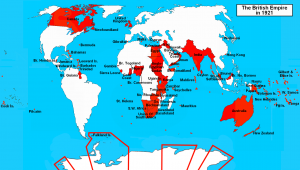The British Labour Party Uses Humanitarian Assistance as a Means of International Diplomacy In the Twenty-First Century
Early in 1947 Wavell, the Viceroy, concluded that no single India central authority could be constituted and he accordingly advised the British government either to retain power for at least a decade or to transfer it, fragmented, to the several provinces.
The United Kingdom Government rejected this advice. The Viceroy, Lord Wavell, was recalled, and replaced in 1947 by Lord Mountbatten of Burma as the last viceroy. Lord Mountbatten brought the prestige of his royal connections and his war record to his new power (he had been the Supreme Allied Commander in South- East Asia): he had, additionally, a well-developed diplomatic sense and capacity for decision- making. He also had a good relation with the Attlee Government with regard to a large number of issues. Concerning Lord Wavell, however, Attlee wrote in his autobiography, “I had a great admiration for Lord Wavell… but I did not think he was likely to find a solution. I did not think that he and the Indians could really understand each other. New men were needed for a new policy.”16
The appointment of Lord Mountbatten was to end British rule in India. Lord Mountbatten started by re-examining the points of agreement and disagreement among the Indian leaders. This was not a formal investigation, but only an attempt on the part of the Viceroy to enter into the fears and hopes that occupied the Indian leaders’ minds. In his exploration, Lord Mountbatten was least successful in respect of the League. “I will enter the discussion on one condition only.”17 Mohammed Ali Jinnah said to the Viceroy, in the opening conversation of his first meeting. Lord Mountbatten interrupted Jinnah at once and said to the Muslim League leader “Mr Jinnah, I am not prepared to discuss conditions or, indeed, the present situation until I have had the chance of making your acquaintance and knowing more about yourself.”18 Very little was achieved in the meetings between the last Viceroy and Jinnah. This was as a result of Jinnah’s uncompromising manner and his lack of experience in handling hard negotiations. However, the Viceroy was significantly successful in dealing with the Congress.
Lord Mountbatten, within two weeks of his arrival in India in March 1947, concluded that “the need for a solution was much more pressing than it had appeared to be in London, and that the time limit of June 1948, far from not allowing enough time, was too remote.”19 The Viceroy, therefore, advanced the date of withdrawal to August 1947. By taking such action the Viceroy prevented a bloody civil war in the Indian subcontinent. This included proceeding with a partition plan to accommodate the Muslim League’s demand, by creating the state of Pakistan.
To supervise partition, both the Congress and the Muslim League joined in a temporary administration. In the beginning of June, the partition plan for the two new states of India and Pakistan was formally made public. In July 1947, the India Independence Act was rushed through the Parliament in the United Kingdom. On 15th August 1947 India and Pakistan gained their independence. Pakistan was formed out of East Bengal, the western Punjab, Sind and Baluchistan. About 80,000,000 peopled eventually found themselves in Pakistan and 320,000,000 in India. There was a massive migration of Hindus from territory designated to Pakistan, and of Muslims from Indian territory. Maharajas, Rajas and Nizams joined the most appropriate of the new states.



